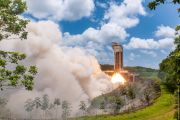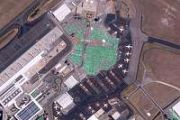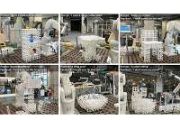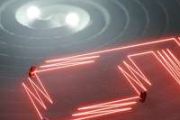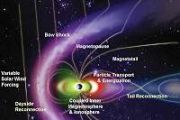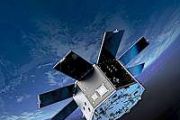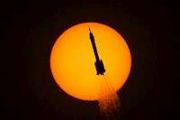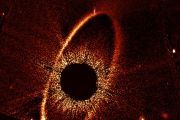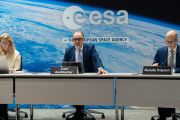
Copernical Team
New insights into Earth's carbon cycle offer clues for habitability of other planets
 Recent research provides critical new perspectives on the historical evolution of oxygen, carbon, and other essential elements on Earth, potentially aiding in the evaluation of habitability on other planets. The study, published in Nature Geoscience, was spearheaded by University of Bristol scientists who demonstrated the significant role of carbon-rich rocks in boosting oxygen production and re
Recent research provides critical new perspectives on the historical evolution of oxygen, carbon, and other essential elements on Earth, potentially aiding in the evaluation of habitability on other planets. The study, published in Nature Geoscience, was spearheaded by University of Bristol scientists who demonstrated the significant role of carbon-rich rocks in boosting oxygen production and re NASA unveils probe bound for Jupiter's possibly life-sustaining moon
 US space scientists on Thursday unveiled the interplanetary probe NASA plans to send to one of Jupiter's icy moons as part of humanity's hunt for extra-terrestrial life.
The Clipper spacecraft is due to blast off in October bound for Europa, one of dozens of moons orbiting the Solar System's biggest planet, and the nearest spot in our celestial neighborhood that could offer a perch for life.
US space scientists on Thursday unveiled the interplanetary probe NASA plans to send to one of Jupiter's icy moons as part of humanity's hunt for extra-terrestrial life.
The Clipper spacecraft is due to blast off in October bound for Europa, one of dozens of moons orbiting the Solar System's biggest planet, and the nearest spot in our celestial neighborhood that could offer a perch for life. Juice mission successfully tests Callisto flyby simulation
 In preparation for a critical mission maneuver in 2031, ESA's Juice spacecraft recently completed a simulated flyby of Jupiter's moon Callisto at the ESOC mission operations center in Germany. This early test involved tricking Juice's engineering model into believing it was navigating past Callisto, to evaluate the spacecraft's autonomous navigation software.
Due to the significant communi
In preparation for a critical mission maneuver in 2031, ESA's Juice spacecraft recently completed a simulated flyby of Jupiter's moon Callisto at the ESOC mission operations center in Germany. This early test involved tricking Juice's engineering model into believing it was navigating past Callisto, to evaluate the spacecraft's autonomous navigation software.
Due to the significant communi Assessing the ages of moons from impact craters
 Our solar system's giant planets-Jupiter, Saturn, Uranus, and Neptune-are surrounded by nearly 300 moons. Researchers utilize crater analysis to deduce the ages and origins of these celestial bodies.
Various theories explain the creation of the solar system's moons. Predominantly, it is believed that they formed from disks of gas, dust, and pebbles that encircled nascent planets, similar t
Our solar system's giant planets-Jupiter, Saturn, Uranus, and Neptune-are surrounded by nearly 300 moons. Researchers utilize crater analysis to deduce the ages and origins of these celestial bodies.
Various theories explain the creation of the solar system's moons. Predominantly, it is believed that they formed from disks of gas, dust, and pebbles that encircled nascent planets, similar t SpaceX launches military weather satellite into orbit
 SpaceX launched its second national security mission of 2024 on Thursday with a Falcon 9 rocket lifting the U.S. Space Force mission USSF-62 into orbit.
The mission took off from California's Vandenberg Space Force Base at 10:25 a.m. EDT. The mission sends a Weather System Follow-on Microwave satellite, or WSF-M, to low Earth orbit.
BAE Systems said it "will provide critical and
SpaceX launched its second national security mission of 2024 on Thursday with a Falcon 9 rocket lifting the U.S. Space Force mission USSF-62 into orbit.
The mission took off from California's Vandenberg Space Force Base at 10:25 a.m. EDT. The mission sends a Weather System Follow-on Microwave satellite, or WSF-M, to low Earth orbit.
BAE Systems said it "will provide critical and Russian rocket lifts off at third attempt
 A Russian rocket blasted off for a test flight on Thursday at the third try, after previous launch attempts earlier this week were aborted in the final seconds of countdown.
The flagship Angara A5 - a powerful spacecraft designed to carry heavy payloads into low Earth orbit - took off from the Vostochny Cosmodrome in the Russian Far East, a live broadcast showed.
"The rocket worked acc
A Russian rocket blasted off for a test flight on Thursday at the third try, after previous launch attempts earlier this week were aborted in the final seconds of countdown.
The flagship Angara A5 - a powerful spacecraft designed to carry heavy payloads into low Earth orbit - took off from the Vostochny Cosmodrome in the Russian Far East, a live broadcast showed.
"The rocket worked acc Kennedy Space Center Enhances Altitude Chamber for Artemis II Spacecraft Trials
 As NASA prepares for the Artemis II mission, the Orion spacecraft is set for extensive testing to ensure its readiness for lunar exploration. Engineers at Kennedy Space Center have recently upgraded the altitude chamber used for these tests. The upgrades were made in anticipation of the testing phase, ensuring the spacecraft endures conditions similar to those
As NASA prepares for the Artemis II mission, the Orion spacecraft is set for extensive testing to ensure its readiness for lunar exploration. Engineers at Kennedy Space Center have recently upgraded the altitude chamber used for these tests. The upgrades were made in anticipation of the testing phase, ensuring the spacecraft endures conditions similar to those NASA continues Artemis program amid advancements in Starship program at SpaceX
 As the race to the Moon intensifies, NASA's Artemis program and SpaceX's Starship represent two pivotal, yet distinct approaches to lunar exploration. Despite the emergence of cost-effective alternatives like SpaceX's Starship, NASA is moving forward with Artemis, underscoring its strategic, multi-faceted mission objectives beyond mere cost considerations.
NASA's Artemis program is laser-f
As the race to the Moon intensifies, NASA's Artemis program and SpaceX's Starship represent two pivotal, yet distinct approaches to lunar exploration. Despite the emergence of cost-effective alternatives like SpaceX's Starship, NASA is moving forward with Artemis, underscoring its strategic, multi-faceted mission objectives beyond mere cost considerations.
NASA's Artemis program is laser-f Wireless power transmission could enable exploration of the far side of the moon

How can future lunar exploration communicate from the far side of the moon despite never being inline with the Earth? This is what a recent study submitted to IEEE Transactions on Aerospace and Electronic Systems hopes to address as a pair of researchers from the Polytechnique Montréal investigated the potential for a wireless power transmission method (WPT) comprised of anywhere from one to three satellites located at Earth-moon Lagrange Point 2 (EMLP-2) and a solar-powered receiver on the far side of the moon.
NASA technology helps guard against lunar dust
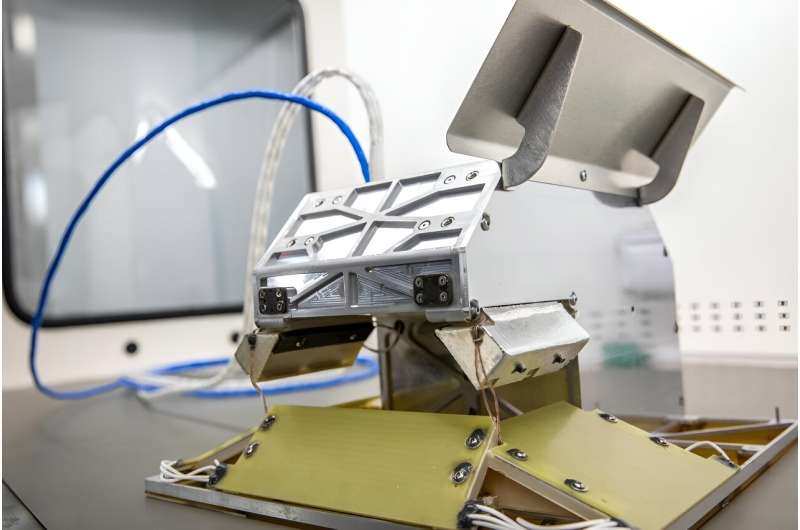
Defeating dust may be a small concern for most people on Earth, but for astronauts and spacecraft destined for the moon or Mars, it is a significant hazard that must be mitigated.












